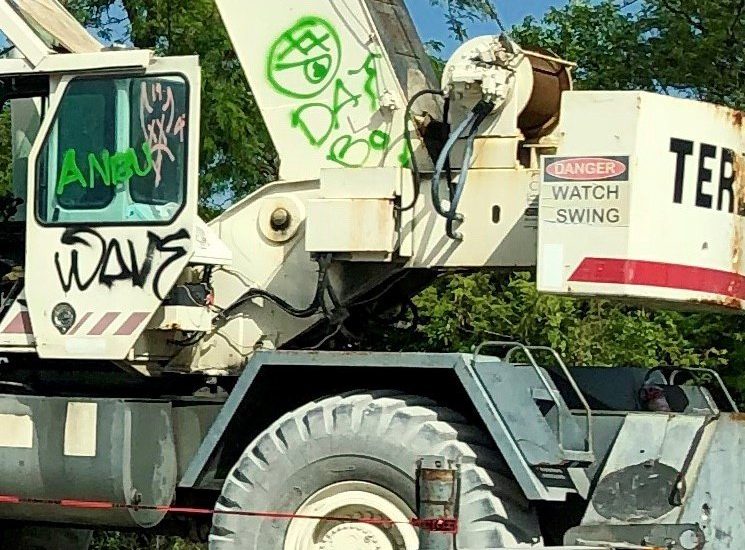- December 13, 2019
- Posted by: admin
- Category: Contractor Legal Information, Florida Contractor License

The following article was written by Miami Construction Lawyer Alex Barthet and appeared first on TheLienZone. It was re-posted with permission. For more information about Alex and his firm, please visit www.TheLienZone.com and www.Barthet.com.
See below for some great information on protecting your construction site from graffiti vandals. Do not hesitate to call us here at Licenses, Etc.! If we don’t have the information, we can find it for you!
We’re all familiar with graffiti. There’s been plenty of it around for a very long time. Those of us who live in Miami have even seen it develop into an art form. Wynwood Walls has been transformed into an international tourist attraction, exhibiting spectacular and visually stunning outdoor murals by a variety of aspiring artists. Of all the forms of graffiti, tagging may be the most popular – spray painting one’s name, initials or symbols, on someone else’s property, often times a building, a highway sign, or even a piece of construction equipment, any place where it can be readily seen by as many folks as possible.
Tagging is usually the distinctive, albeit illegal, depiction of the artist’s name, a personalized signature referred to as hand style in graffiti culture. Hand styles are unique to each tagger. Using a large marker or more likely an aerosol spray paint, something easy to carry and maneuver, the tagger works quietly, generally in the shadows, but hoping to make a big splash.
Some 12 billion dollars are spent annually in the United States alone to clean up graffiti. Moreover, in most every state, marking public or private property without permission is considered a criminal act. The placement of graffiti in Florida is an act of criminal mischief and considered vandalism. Depending on the extent of the damage, it can be classified a misdemeanor or felony, punishable by a fine, community service and even jail time.
The surge in construction activity in South Florida has increased the likelihood that taggers keen on making their mark will visit your job site. Any place with the potential for a visual impression becomes their canvas. Sometimes it is a newly constructed bock wall or that bright yellow backhoe parked on site.
So how do you minimize the potential for tagging at your construction project?
- Secure your site with adequate chain link fencing, strong locks and No Trespassing signage in all the right places.
- Light up your site with motion activated outdoor LED security floods and spots.
- Monitor your site, 24/7, with both security guards and surveillance cameras, and restrict access to only authorized personnel.
- Clean up your site, get rid of debris, and especially remove any prior tagging or graffiti, thus reducing the likelihood of repeat offenses.
Whether your project is large or small, your equipment new or old, tagging is something you want to discourage if not eliminate. It devalues your project, emboldens vandals, and costs you time and money to clean up.
This article was first published on Construction Junkie
At Licenses, Etc., we offer a fast and easy contractor license application process for our contractor clients in Florida and other states. We are a Florida contractor licensing company. Contact us at Licenses, Etc., to get your Florida contractor’s license today by clicking Florida contractor’s license page or calling 239-777-1028.
Leave a Reply
You must be logged in to post a comment.
